Omnichannel marketing is one of the best ways to build strong, long-term customer relationships. However, adopting this approach can be intimidating, since it typically requires overhauling your entire approach to advertising and customer service.
Fortunately, there are a few tips you can use to optimize your omnichannel marketing strategy. By putting the customer first, creating personalized experiences, and analyzing important data, you can keep your advertising and brand identity consistent across different platforms.
In this guide, we’ll look at what omnichannel marketing is and why you should use it as part of your business strategy. Then, we’ll discuss five key tips for implementing it. Let’s get started!
What is Omnichannel marketing?
Omnichannel marketing is an advertising and customer service strategy that spans multiple platforms. It targets everywhere from your physical store to your website and social media interactions.
Unlike multi-channel marketing, this omnichannel strategy is not just focused on reaching users on different platforms. In fact, its aim is to create a seamless customer experience across all of your channels. For example, a user could buy items via your online store and arrange to pick them up in-store. At every point of the purchase, the consumer will receive the same, consistent experience:

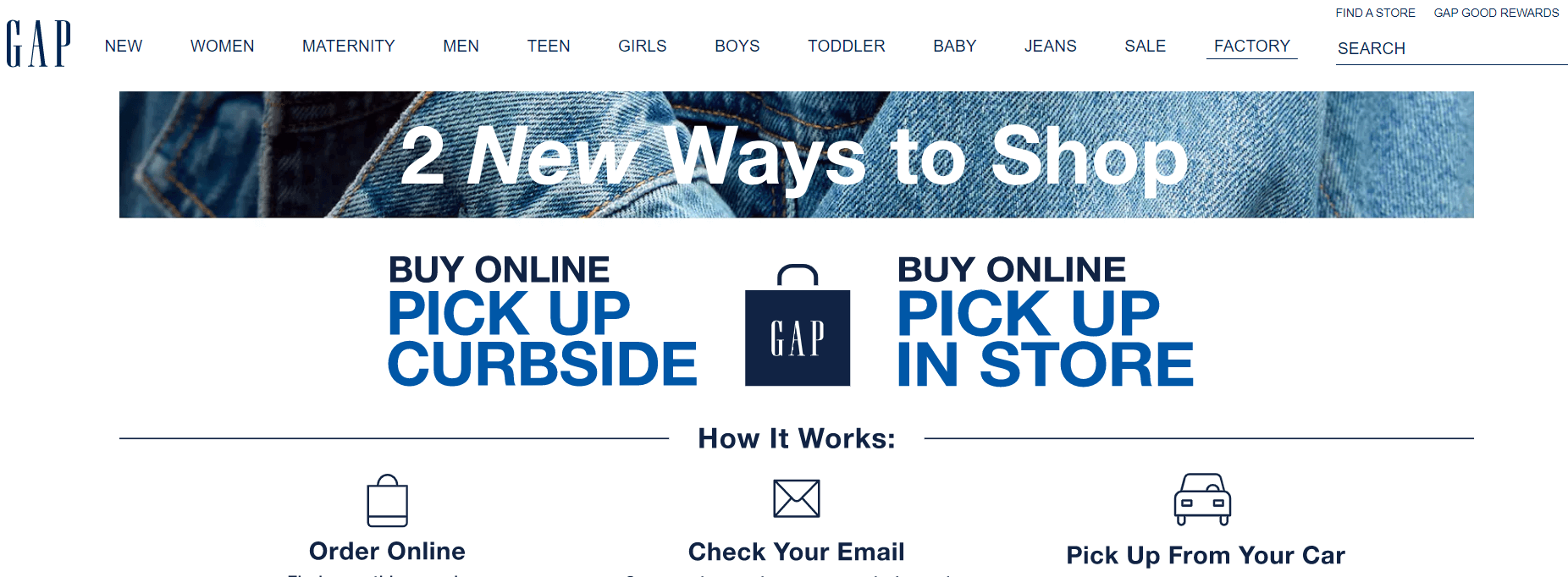
As you can see, omnichannel marketing is a customer-focused strategy. It seeks to offer consumers a positive experience on every channel.
Some key elements of this marketing strategy include:
- A consistent brand tone and approach
- A personalized customer service experience
- Adapting content that changes through the customer experience and maintains consistency across platforms
Using omnichannel marketing can be very beneficial for your brand and business. In fact, it can increase your customer purchase rates by 287 percent[1]. You can be even more successful if you incorporate text messaging into your strategy. Campaigns with SMS are almost 50 percent more effective overall, enabling you to connect with more customers and make more sales.
This approach can also solidify your brand identity. If your customers are receiving a similar experience across all your channels, they can get a better idea of your business and its core values. Maintaining a consistent brand identity can also potentially increase your overall revenue by 23 percent[2]. Therefore, an omnichannel marketing strategy can be a worthwhile investment if you want to increase your bottom line.
How you can use omnichannel marketing to grow your business (5 key tips)
So far, we’ve looked at how omnichannel marketing can help you boost your sales and retain customers. Now, let’s take a look at five key tips for implementing this strategy:
- Put the customers first
- Prioritize your base of operations
- Keep the user experience personalized
- Track your success (and your failures)
- Focus on context
1. Put the customers first
One of the key components of an omnichannel strategy is a customer-first approach. As such, you should focus on understanding your consumers and providing an overall enjoyable experience when they interact with your business.
Impressing new customers and maintaining the loyalty of your existing ones can be highly beneficial for your business. A consumer who feels totally satisfied contributes up to 2.6 percent more revenue[3] to a company than a somewhat satisfied one.
Furthermore, implementing better service now can help to save relationships with previously dissatisfied customers. For example, up to 95 percent of consumers[4] will return to a business that resolves their problems quickly. Therefore, using customer-focused strategies can convince people to use your services and buy your products again.
Before you can cater to your customers, you’ll need to understand their needs, wants, and motivations. You can do this by conducting in-depth consumer research and using it to tailor your omnichannel strategies to your target audience.
For example, you can use the Omnisend platform to collect data on how consumers interact with your store and brand:

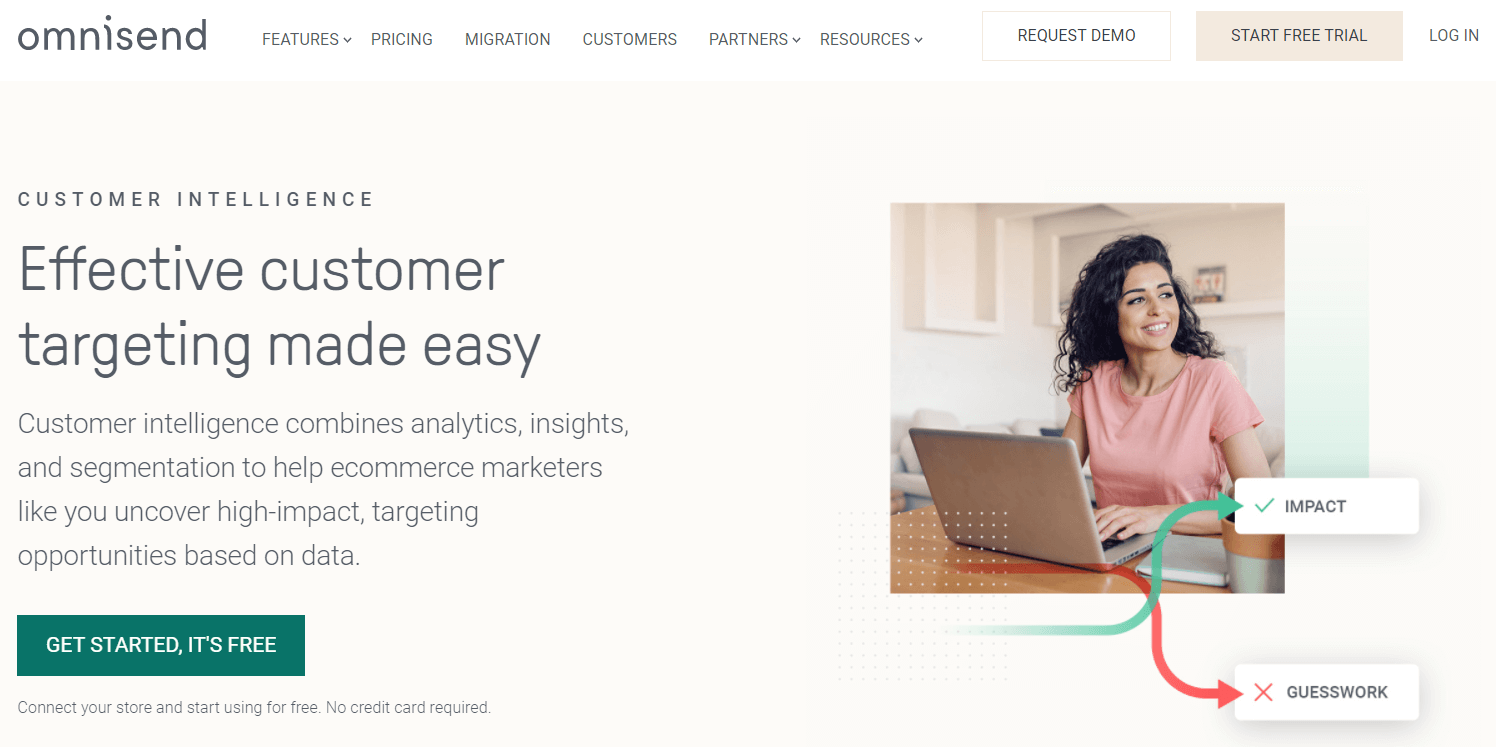
You can connect your online store to the Omnisend platform and view reports such as:
- Customer lifecycle stages
- Engagement history
- Buying preferences
- Retention analytics
Then, you can tailor your marketing efforts to customers who are more likely to open your messages and buy the advertised products or services. Furthermore, you can learn when consumers are choosing to return to your business and use that data to finetune your overall approach.
However, you might want to avoid trying to cover all your bases. If you try to reach your consumers across every available platform, you may stretch yourself thin. As such, you might like to consider focusing on a few key channels and perfecting the customer experience there.
2. Prioritize your base of operations
It can be easy to get caught up in optimizing all of your different channels. Therefore, you may want to establish a base for all your marketing operations, such as your company’s website. Otherwise, you risk straining your overall resources and providing a sub-par experience to your customers.
We recommend running your main omnichannel marketing strategies from your website, as this is one of the most versatile platforms. If you use a flexible Content Management System (CMS) such as WordPress, you can customize various aspects of your advertising approach.
For example, you can base your customer service operations on your website. Using live chat can enable consumers to contact your team with queries and complaints during their shopping experience. You can also use this feature to recommend specific products to your users:

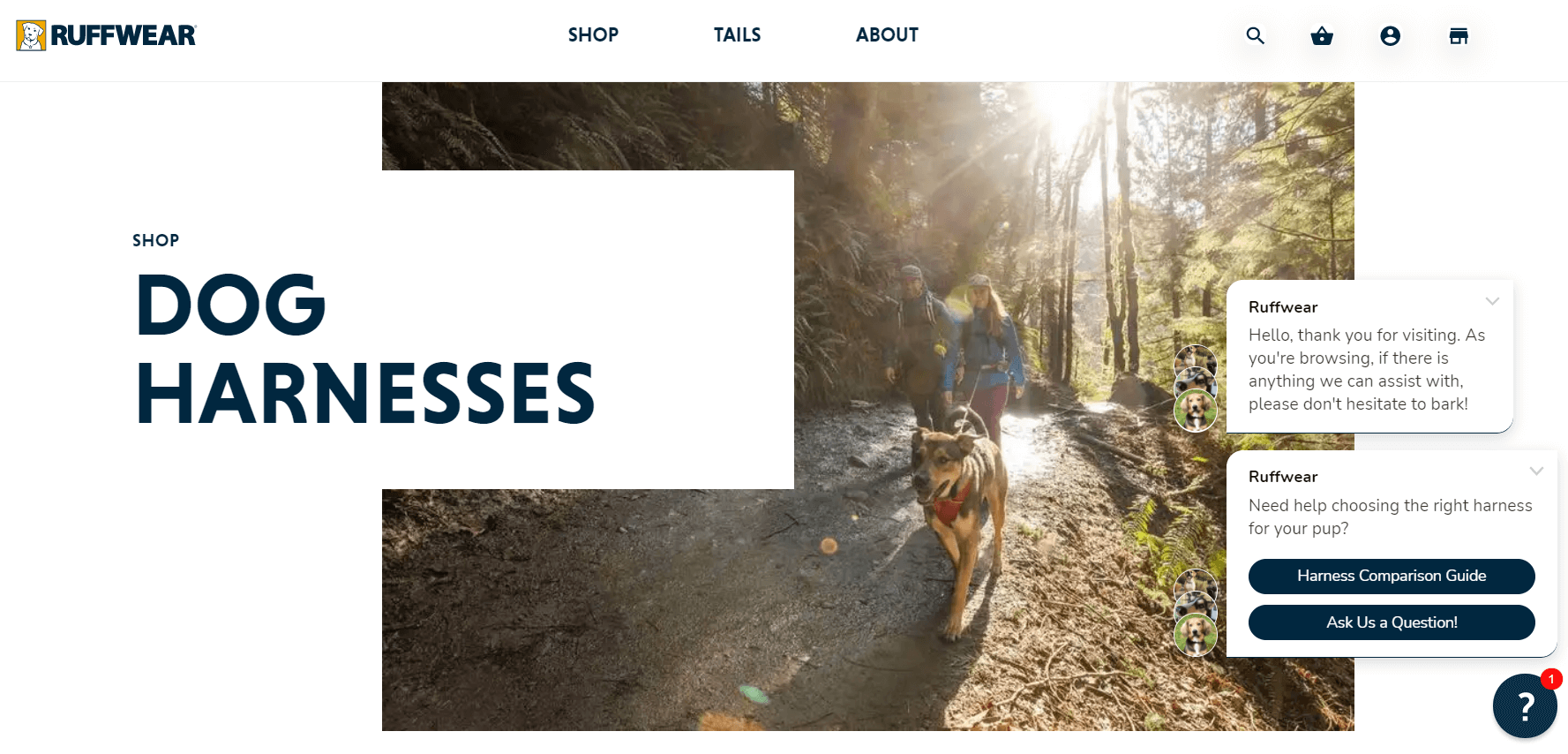
Approximately 83 percent of people[5] who contact businesses via a chat function report satisfaction with their experience. Therefore, you should consider prioritizing this platform.
Fortunately, setting up a chat function is easy with a program such as Sendinblue:

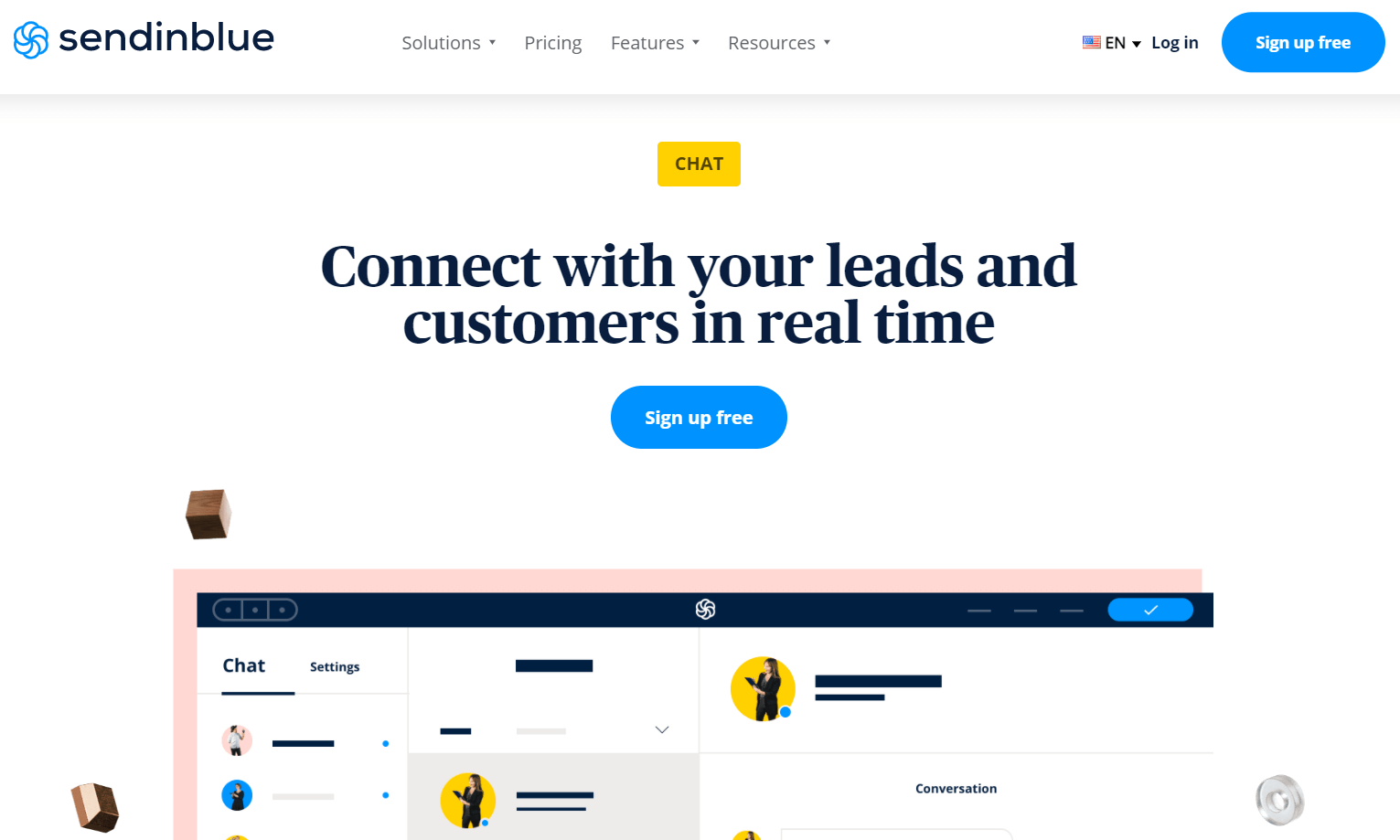
Using this platform, you can personalize your chatbox with your business colors, name, and logo. Any messages sent from customers will go immediately to your Sendinblue inbox, enabling your team to respond immediately. The software also shows you which page the consumer is on, so you can customize your responses more quickly.
Furthermore, Sendinblue has a centralized platform for messages received via email or contact forms. As such, you can handle your customer service operations from a single dashboard.
3. Keep the user experience personalized
Personalizing the user experience involves collecting data on your customers and using it to inform your marketing efforts. For example, you may email your users with similar products to those they’ve purchased before or according to their interests. As such, this strategy helps you deliver an individualized response to each consumer.
Using personalization can be fruitful for your brand. Your users are 29 percent more likely[6] to open an email if you personalize it rather than send them a generic message. Furthermore, around 80 percent of consumers[7] prefer to buy from brands that provide individualized service.
You can achieve personalized customer experiences by using segmentation. This means grouping your users according to data you’ve collected about factors such as:
- Their buying habits and past purchases
- Email and SMS engagement rates
- Actions on your website
- Entries in contact forms
Then, you can utilize this data for targeted marketing. For example, you can use the Sendinblue platform to segment your customers according to these criteria and group them together for email campaigns:


You can also make templates for personalized messages. For example, you can choose to address your customers by their first and last names. Additionally, you can enable Google Analytics tracking to view data on open rates and clicks:

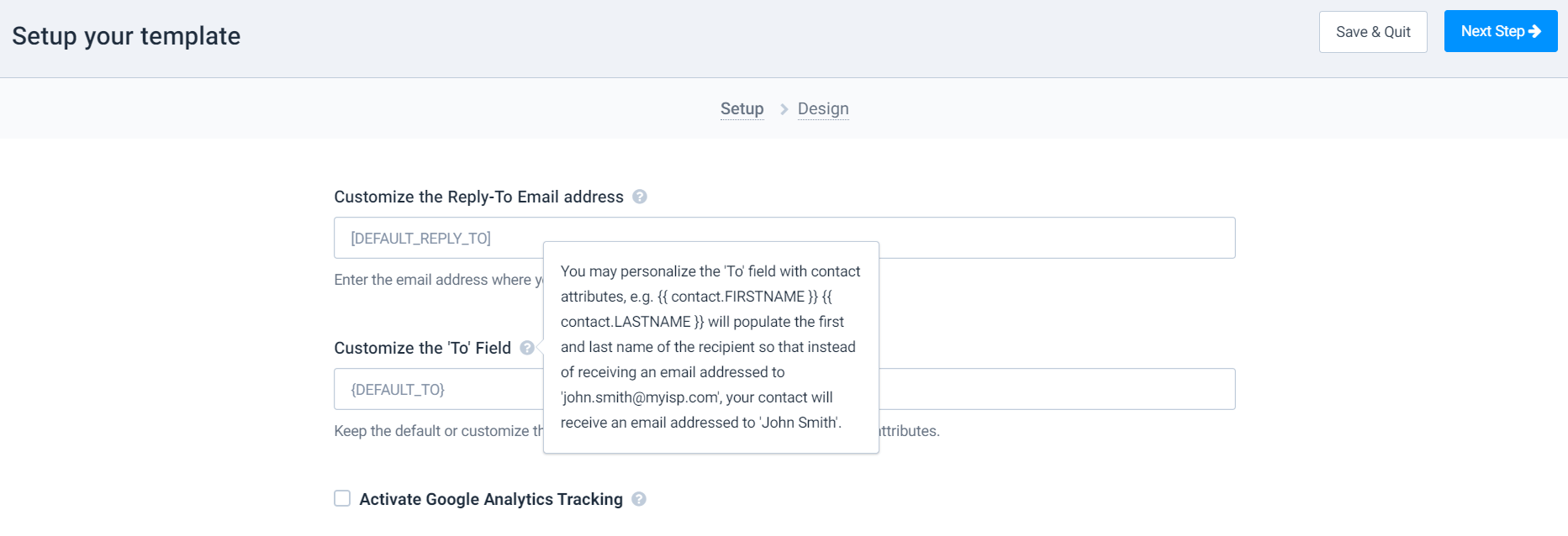
Remember that if you’re using an omnichannel strategy, you’ll need to apply this personalization across the board. As such, all of your channels, including text and live chat features, should use your customer’s name and segmentation data.
4. Track your success (and your failures)
Not every omnichannel strategy is suitable for every business. As such, it’s essential to monitor your efforts to see which ones are yielding results and which aren’t. This is particularly important if you are incorporating new channels such as SMS.
You can track the success of your campaigns by viewing analytics data on your chosen platform. For example, if you’re using Sendinblue, you can head to the Statistics dashboard to view information about your campaigns and conversions:

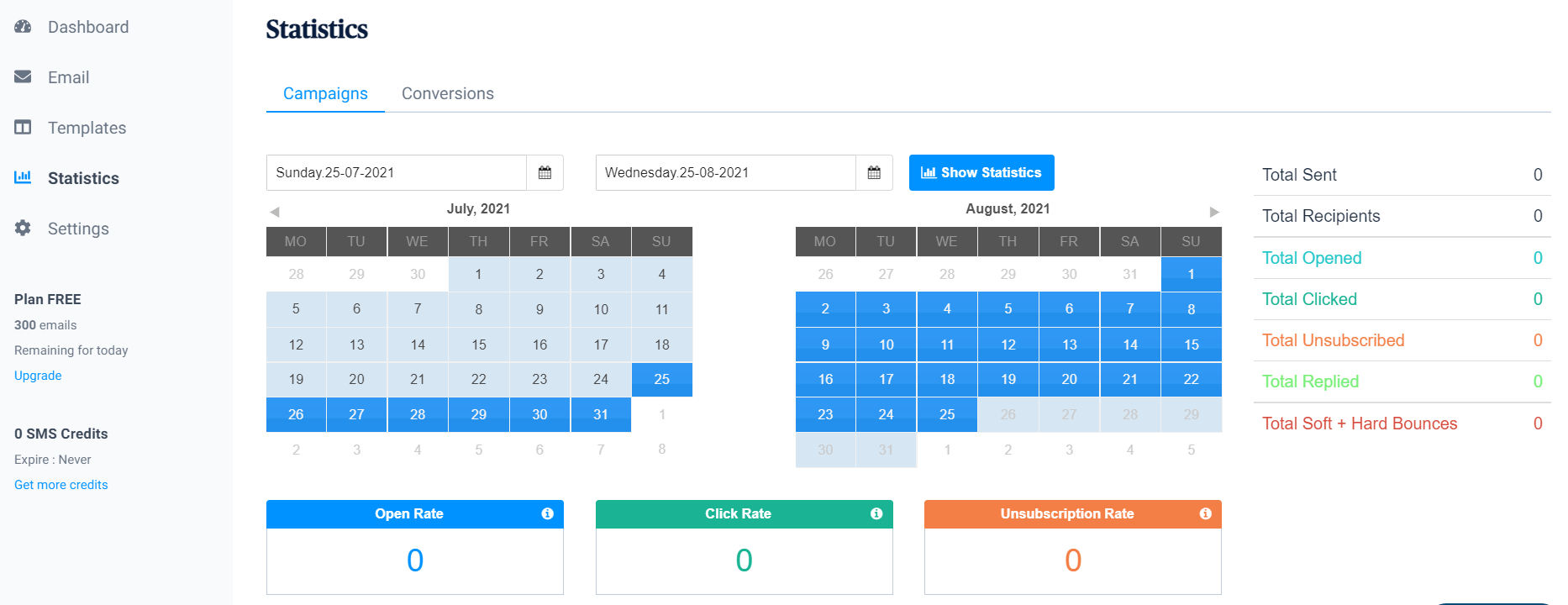
This will show you detailed information on the performance of your email and SMS campaigns. For example, you can see which messages yielded the most clicks, opens, and replies. On the other end of the scale, you can also view which content prompted your users to unsubscribe. Therefore, you can adapt future strategies according to this data.
Furthermore, you could poll your customers to see their satisfaction with your omnichannel marketing strategies. For instance, suppose you’ve just implemented a new live chat function on your site. At the end of an interaction, you could ask the user to rate their experience and provide any feedback.
5. Focus on context
Finally, it can be helpful to keep context in mind when you design your marketing strategies. When working with many platforms, you may feel tempted to deliver the same content across the board. However, not all message formats are suited to all channels.
For example, the copy that you write for a long email probably isn’t suitable for your SMS campaigns:

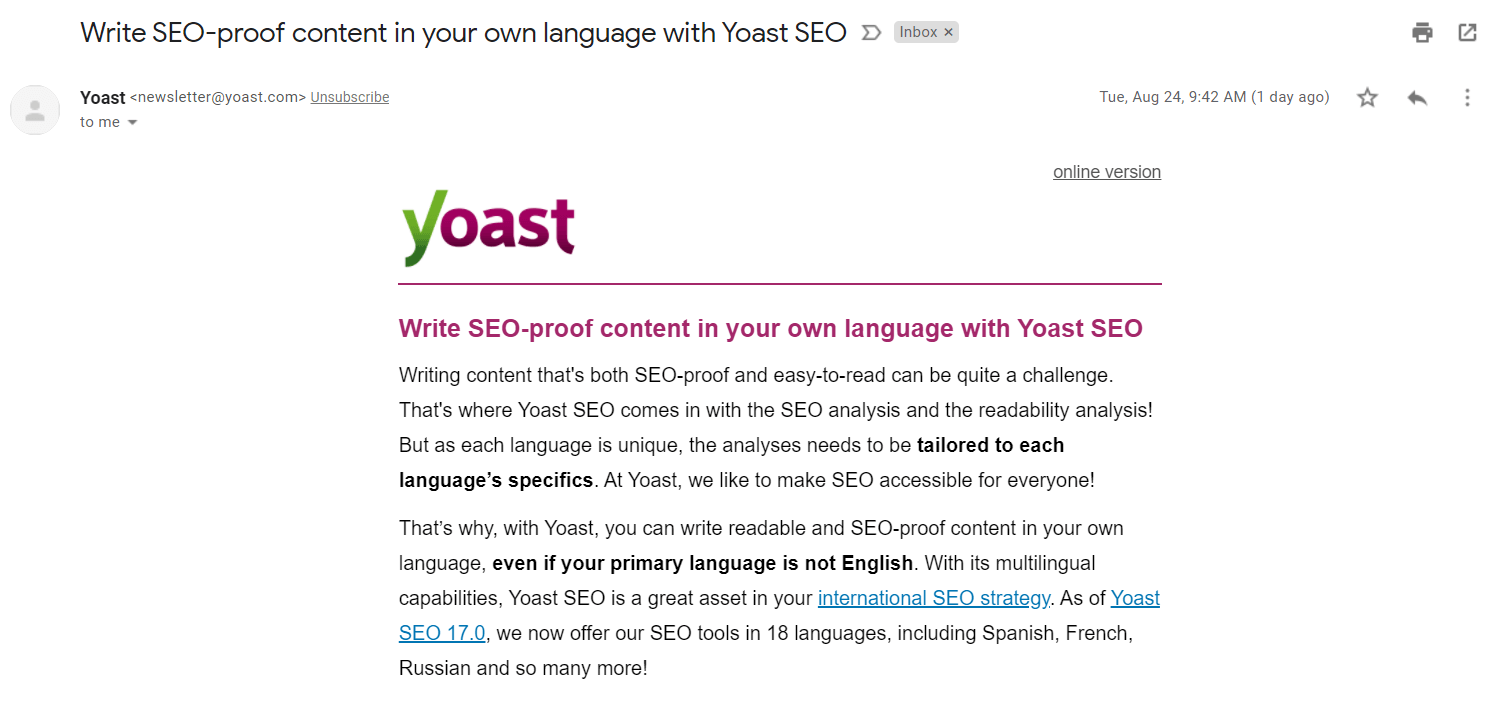
Therefore, you’ll need to adapt your content to different channels. For example, you might design a campaign to advertise a sale on your products. You can collate information about the different discounts and featured products. Then, you may like to assign different team members to different platforms, such as email and Google ads, so that you’re not mixing your copy.
You should also consider optimizing content for the device your customer is using. If you see that a user usually accesses your store from their mobile phone, you might like to customize ads for that platform. For example, you might opt to send them an SMS over an email. When they get to your e-commerce store, the shopping journey should also be optimized for mobile purchases.
Conclusion
Omnichannel marketing is a multi-platform strategy that aims to put your customers first and give them a consistent experience online and offline. By using this advertising approach, you can cement your brand identity and increase consumer loyalty in the long term.
To recap, you can use these tips to improve your omnichannel marketing efforts:
- Put your customers at the forefront of your strategy.
- Maintain a core hub for your marketing efforts.
- Keep the customer experience personalized for each user.
- Analyze data to track your success and failures.
- Consider the context of your individual approaches.
Do you have any questions about how to use omnichannel marketing? Let us know in the comments section below!
[1] https://www.omnisend.com/resources/reports/omnichannel-marketing-automation-statistics-2020/
[2] https://www.forbes.com/sites/gabrielshaoolian/2018/08/10/10-marketing-web-design-branding-statistics-to-help-you-prioritize-business-growth-initiatives
[3] https://www.infoquestcrm.co.uk/case-studies-2/
[4] https://www.peopleclaim.com/#the-review-of-reviews
[5] https://www.statista.com/statistics/818590/customer-satisfaction-rate-with-live-chat-worldwide/
[6] https://www.experian.com/assets/marketing-services/white-papers/ccm-email-study-2013.pdf
[7] https://www.epsilon.com/us/about-us/pressroom/new-epsilon-research-indicates-80-of-consumers-are-more-likely-to-make-a-purchase-when-brands-offer-personalized-experiences
The post Omnichannel Marketing: What It Is and How You Can Use It appeared first on Revive Social.
Revive Social
